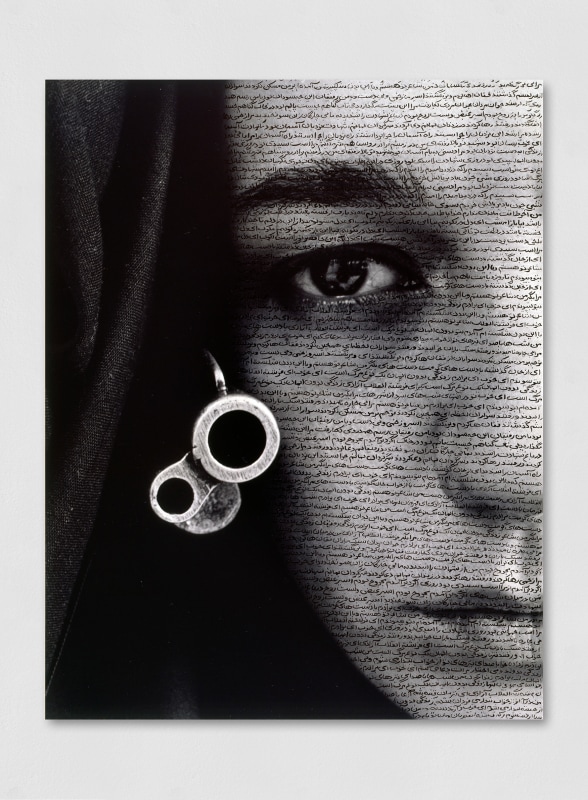-
Biography
Shirin Neshat (Qazvin, Iran 1957)
Shirin Neshat is an Iranian-born artist and filmmaker living in New York. Neshat works and continues to experiment with the mediums of photography, video and film, which she imbues with highly poetic and politically charged images and narratives that question issues of power, religion, race, gender and the relationship between the past and present, occident and orient, individual and collective through the lens of her personal experiences as an Iranian woman living in exile.
Neshat has held numerous solo exhibitions at museums internationally including the Pinakothek der Moderne, Munich; Modern Art Museum of Fort Worth; The Broad, Los Angeles; Museo Correr, Venice, Italy; Hirshhorn Museum, Washington D.C. and the Detroit Institute of Arts.Neshat has directed three feature-length films, Women Without Men (2009), which received the Silver Lion Award for Best Director at the 66th Venice International Film Festival, Looking For Oum Kulthum (2017), and most recently Land of Dreams, which premiered at the Venice Film Festival (2021).
Neshat was awarded the Golden Lion Award, the First International Prize at the 48th Biennale di Venezia (1999), the Hiroshima Freedom Prize (2005), the Dorothy and Lillian Gish Prize (2006) and in 2017, she received the prestigious Praemium Imperiale Award in Tokyo.
She is represented by Gladstone Gallery in New York and Goodman Gallery in London.
Text on Women of Allah
“I made this body of work between 1993 and 1997 following my first trip to Iran since the 1979 Iranian Revolution. With this series, I began an uncompromising journey of experimentation and discovery, using art as the means to resolve personal dilemmas. What Women of Allah and my later work have in common is not only a sense of style but also a melancholic beauty, which I trace back to my early experiences of the Koranic chant and religious iconography. In them, faith overcomes anxiety while martyrdom and self-sacrifice give the soul strength.
Four symbolic elements recur in this series: the veil, the gun, the text, and the gaze. Despite the Western representation of the veil as a symbol of Muslim women’s oppression, the subjects of these images look strong and imposing. In fact, the use of the black veil as a uniform has transformed the feminine body into that of a warrior, determined and even heroic. The women’s confident possession and firm grasp of the gun, the phallic object of masculine power, not only reiterates this transformation but also charges the images with a certain eroticism.
Although the Persian words written on the works’ surfaces may seem like decorative motifs, they contribute significant meaning. The texts are amalgams of poems and prose works, mostly by contemporary women writers in Iran. These writings express sometimes diametrically opposed political and ideological views, from slogans of martyrdom and self-sacrifice to poetic, sensual, and even sexual meditations.”
- Shirin Neshat
Copyright the artist. Photo UniCredit Group
-
Works
-
Exhibitions




